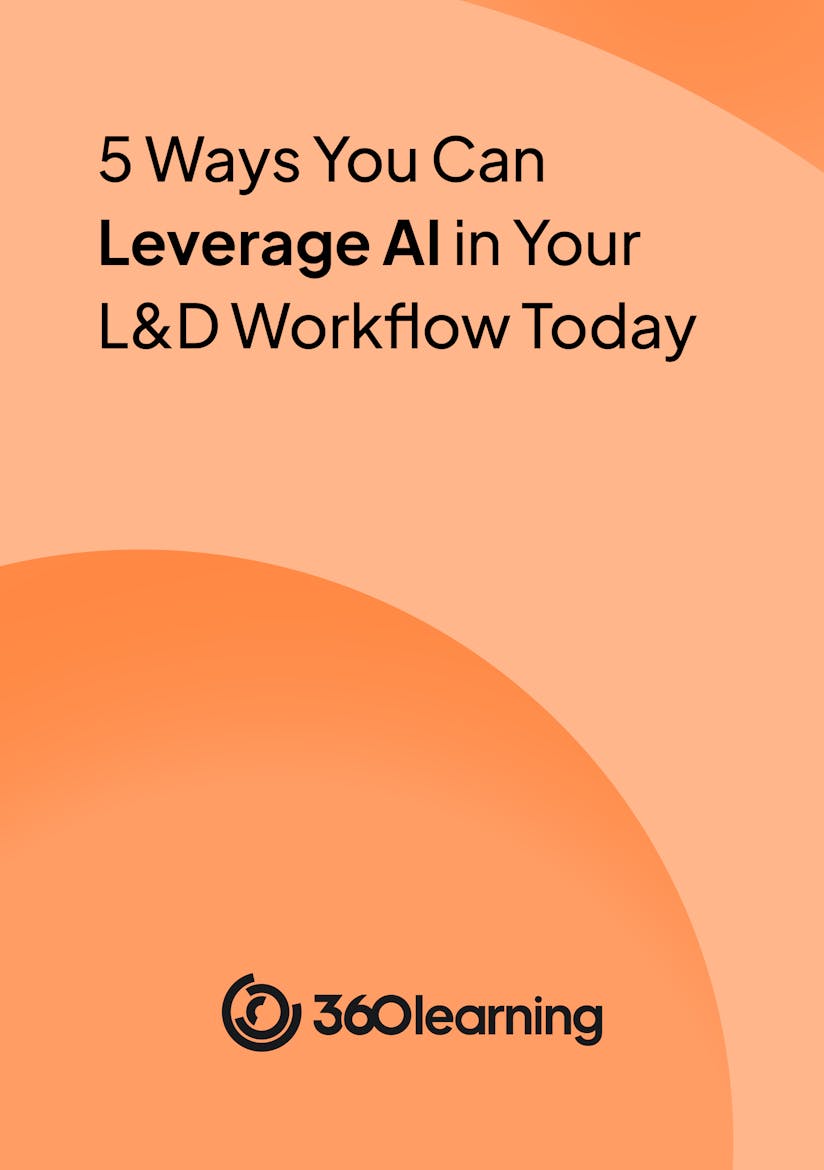
Generative AI (gen AI) is quickly evolving from intriguing novelty to widespread adoption. The tools are improving, tangible use cases are crystalizing, and this new technology is entering corporate workflows. Today, the transformative potential for gen AI in L&D is increasingly clear.
As L&D leaders, we recognize this shift, but we’re still navigating what it means in practice. First-hand experience, concrete success stories, and trusted peers who have already integrated Gen AI into their work can be hard to find.
Sean Bengry, Director of Learning Transformation and Technology at DaVita Kidney Care, has already embedded generative AI into his work, with remarkable results. In this article, we examine how Sean uses gen AI to deliver personalized learning and talent development. From enhancing human understanding to redefining L&D’s core aims, we’ll see practical examples and forward-thinking strategies.
Sean offers a roadmap for L&D professionals ready to embrace this game-changing technology and rethink what’s possible.
L&D Podcast: How Generative AI is transforming L&D right now With Sean Bengry

Have the robots really taken over?
By providing your contact info, you agree to receive communications from 360Learning. You can opt-out at any time. For details, refer to our Privacy Policy.
Key use cases of gen AI in L&D
As Gen AI solidifies its place in modern workstreams, Sean sees a handful of clear ways to use this technology in L&D:
- Automating tasks and processes. AI can now automate whole aspects of your L&D workflow, including quite complex interactions. For example, it can collect input from an executive leader and generate learning objectives and potential course outlines to meet those business goals. It can also create storyboards, PowerPoint decks, and images using the correct branding. It can even publish these to your LMS system if you let it.
- Creating templates. You can use AI to generate templates for your teams. This lets team members quickly create scripts or storyboards using those AI-generated templates, and still leaves room for their own insights and expertise.
- Analyzing data. Generative AI can analyze large datasets to provide instant insights and actionable charts. For L&Ds, this could include course completion records and learner data, to show you what’s working and which areas of your program need attention.
“You can throw up 15,000 course completion records,” says Sean. “Anonymize your learner data set (for security), and it'll provide real-time insights that you might not have seen.” - Identifying skills gaps. Mapping out and closing skills gaps is a critical concern for businesses today, particularly with the rate of technological change. AI can pinpoint the skills required for specific roles within an organization and create courses that bridge proficiency levels. And it can do this continuously, and almost instantly.
The result is organizational skills maps that are always up to date and relevant, and new courses launching dynamically when needed.
Those are just four quick examples, but there are countless more. Even if we look just at content creation, there’s a wide range of gains to be made.
"This has the potential to change things in the same way that moving to the cloud did, or the rise of smartphones."
4 ways to use Gen AI for more impactful L&D content
Perhaps the area that most excites Sean—and likely all L&Ds—is using gen AI tools to help make learning content more relevant, more targeted, and more impactful overall. And crucially, without flooding our teams with mediocre content.
Here are four specific ways this new technology can help.
1. To create individualized learning paths
Personalized learning has been a key focus for L&Ds for at least the last decade.
“Personalized learning are words we’ve used in the past.” Sean explains, “In reality, it was more like customizing. A small flavor or sprinkling of personalization.”
So far, instructor-led training has been crucial, because humans can adjust on the fly to a learner’s personality, performance, and behavior. But this isn’t really scalable, and relying on one-on-one coaching leaves a lot of learners behind.
By contrast, AI can create content that truly is designed to specifically appeal to and engage with each person. AI can use individual profiles to tailor content and presentation styles. Inputting data like DISC scores and LinkedIn profiles can help AI understand a person intimately. It can then modify content in real-time based on an individual's preferences.
“The more data you can put in there around who a person is…the more AI can personalize that learning information. Shifting specific content—or ways to present content—based on what it knows about the person and where it knows that person needs to go.”
2. To spotlight new voices
Empowering in-house subject-matter experts is (and should always be) a core goal for L&Ds. Gen AI makes this far more efficient by removing much of the hard legwork they’d otherwise have to do. New course materials are quick to create, and the tools help to ensure that they meet specific end users’ needs.
But Gen AI can also help to spark creativity and new ideas from people who might be new to authorship, or potentially just shy. They can write new course materials, exercises, and roleplay scenarios in the voice of someone you or the audience know and admire.
“I can write content that fits a theoretical style, or my favorite book,” says Sean. “Maybe I want to sound like Ruth Clark or David Mayer. It'll take those expert personas and layer their perspective, if they would have written it.”
The same technique can make courses funnier, more poignant, or simply more interesting. Craft in the style of well-known industry figures, and your courses immediately become more relevant and engaging to learners.
3. To close very specific skills gaps
The greatest challenge for most course authors is time. There are so many topics to cover—ideally in detail—that you have to be selective in where you put your effort. This typically results in a focus only on the big skills shortages affecting most people. Do the most good for the most people, and put the highly specific skills gaps to one side.
Generative AI changes this time/cost dynamic. “There was a level of business impact required in closing skills gaps, and we had to target those [larger impacts]. But now you’re seeing this new pace.”
This doesn’t mean that skills gaps will just automatically close themselves—at least not yet. But the barriers to closing them have suddenly become much lower. We can tackle more issues, more efficiently, and with more precision.
4. As a content curator
Much of our work as L&Ds is gathering data from across internal and external sources, reworking it to fit our specific audience and organization, then sharing it. Gen AI tools have proven particularly effective at this task of collecting, collating, and condensing key information.
Google’s Notebook LM, for example, can aggregate data from notes, white papers, videos, and audio, and synthesize it all. You can take the huge collection of recorded presentations, internal briefing notes, and other training materials, and distill them into something digestible for future learning.
All without wasting time or using content that’s no longer up to date. “It was a new mode of content synthesis that I had never seen before,” says Sean.
How to improve your L&D work with Gen AI
Based on just the above, we can already expect Gen AI to fundamentally change the L&D profession as it is used more widely:
- Whole workflows will be automated. Starting with feedback collection, stakeholder input, and data analysis.
- Skills gap analysis will become more dynamic. This work can be continuous and performed in real time, rather than regularly being three-to-six months behind the current moment.
- Organizational expertise will be used more effectively. In-house experts can start with automated templates and outlines, followed by slide decks, storyboards, and images. They can even be guided through publishing to the LMS automatically.
- More personalized learning. The amount and quality of data synthesis available today means learning paths really can be tailored to the individual.
So what needs to happen for these changes to occur? For those who are hesitant, it requires a mindset shift. “Just start with relevance,” says Sean. “There are certain things you have to do every day in your professional life, and Gen AI can help make some of those things a lot quicker. And not just free up time for you to do that stuff, but it can really help, too.”
And start small, at first. “Have fun with it—it doesn't take a lot of expertise to use. Put Chat GPT or Claude in voice mode and talk to it. And just be curious.”
As with every new technology, there’s a learning curve. But this has the potential to change things in the same way that moving to the cloud did, or the rise of smartphones. The impact on and improvement of L&D work is already significant, and we’re just getting started.




